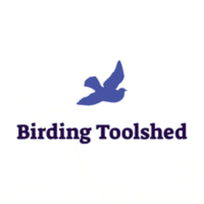Top Birdseeds to Attract New England’s Favorite Backyard Birds: Expert Picks for Successful Bird Feeding!
Want to turn your New England backyard into a birdwatching haven? In this expert-curated guide, we reveal the Top Birdseeds to Attract New England’s Favorite Backyard Birds. Whether you're hoping to spot bright cardinals, curious chickadees, or melodic finches, the right seed makes all the difference. Discover which seeds bring the most feathered visitors—and how to feed them successfully through all four seasons. Perfect for beginner and experienced bird lovers alike!
5/8/20244 min read


Watching birds in your backyard is a simple way to enjoy nature and learn about local wildlife. The right birdseed can make your yard a favorite stop for many of New England’s most loved birds. This guide lists the top birdseeds that will help attract colorful and interesting species to your feeders.
Knowing which seeds work best for the birds in your area makes feeding them much easier. Get ready to discover which seeds New England’s backyard birds like most and how you can use them to bring more activity to your yard.
Key Takeaways
Learn which birdseeds attract birds common in New England.
Find out the top seeds for local backyard birdwatching.
Get tips on how to pick and use seeds for the best results.
Top Birdseeds for New England’s Favorite Backyard Birds
Different birds prefer different seeds based on their species and beak shape. Choosing the right type can attract cardinals, chickadees, goldfinches, sparrows, and more to local backyards.
Black Oil Sunflower Seeds
Black oil sunflower seeds are the top choice for many backyard birds in New England. The soft shell is easy for small birds to crack, and the high oil content provides important energy, especially in colder months.
These seeds attract chickadees, nuthatches, finches, cardinals, and many types of woodpeckers. Even some birds that don’t usually eat seeds may visit feeders for these.
They can be used in tube, hopper, or platform feeders. These seeds can be messy, as the shells pile up under feeders, so regular cleanup is helpful. Shelled sunflower seeds are also available, but they cost more.
Nyjer (Thistle) Seeds
Nyjer seeds, sometimes called thistle, are tiny and black with a high fat and protein content. They are a favorite of American goldfinches, pine siskins, and redpolls.
Use a special nyjer feeder with small holes so the seeds don’t spill out. These seeds are too small for bigger birds, so they give smaller finches a better chance.
Nyjer seeds stay fresh for only a few months. It’s best to buy in small amounts and store them in a dry, cool space. Wet or old seed may grow mold and will not attract birds.
White Proso Millet
White proso millet is a small, round, pale seed. Sparrows, towhees, juncos, mourning doves, and buntings all enjoy it. This seed is best used in platform feeders or sprinkled directly on the ground.
Avoid mixes with red millet, as most backyard birds in New England do not like it. Large amounts of millet can sometimes attract unwanted pests, like house mice, so only offer as much as the birds will eat in a day or two.
This seed is often found in birdseed mixes. It is affordable and easy for birds with small beaks to eat, especially during migration.
Safflower Seeds
Safflower seeds are white and oval-shaped with a hard shell. Cardinals, grosbeaks, chickadees, and some finches like these seeds. Squirrels and grackles usually ignore them because the shell is thick and bitter.
Use in a hopper or platform feeder. Safflower seeds are useful for people trying to attract cardinals while discouraging trouble from squirrels or larger, aggressive birds.
Birds may take several days to recognize and start eating safflower seeds if they are new to the feeder, but once they do, they usually return often. Keep feeders clean to prevent mold, as with all seeds.
Choosing and Using Birdseeds in New England
Selecting the right birdseed can draw a wider range of birds. Feeders and seed blends may need to change through the year to match local bird needs and New England’s climate.
Seed Blends Tailored to Regional Species
New England attracts cardinals, chickadees, finches, nuthatches, and woodpeckers. Many of these birds prefer black oil sunflower seeds, which have thin shells and lots of nutrients. Cardinals also like safflower seeds, while finches enjoy nyjer (thistle). For woodpeckers, peanuts and shelled corn work well.
Some blends mix cracked corn, millet, and sunflower seeds. Avoid mixes with too much filler, like red millet or oats. Most local birds pass these by.
Seasonal Birdseed Selection Tips
Birds need different foods as seasons change. In spring and summer, offer higher protein seeds such as sunflower hearts and peanuts to help nesting birds. Fresh fruit or soaked raisins may also attract orioles and bluebirds.
Fall is a migration time. Attract migratory birds with a mix of sunflower seeds, suet, and nuts. Winter is harsh in New England. Birds burn more calories to stay warm, so high-fat foods like suet, peanuts, and black oil sunflower are best. Keep feeders full and dry since snow and rain can spoil seeds fast.
Feeding Techniques and Feeder Types
Different birds eat in different ways. Tube feeders work well for small seeds like nyjer and attract finches and chickadees. Platform feeders attract grosbeaks and cardinals who like open spaces. Suet cages bring in woodpeckers and nuthatches.
Hopper feeders hold a lot of seed and keep it dry, making them popular for sunflower and mixed seeds. Clean feeders every couple of weeks with hot, soapy water to prevent mold. Place feeders where birds feel safe, away from predators and strong wind.
Using more than one feeder and seed type can attract more species. Keep seed off the ground to avoid unwanted pests. Regularly check and refill feeders, as New England birds can empty them quickly, especially in winter.
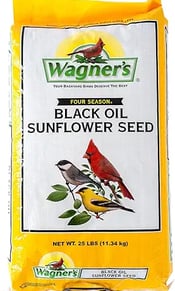

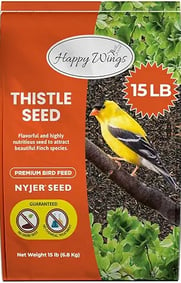

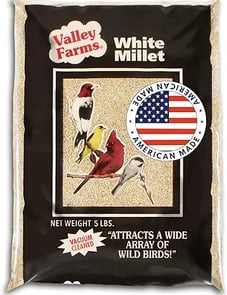


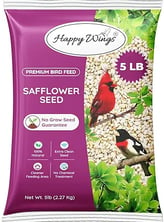
Gear
Quality reviews to enhance your birdwatching experience.
Guide
© 2025. All rights reserved.
